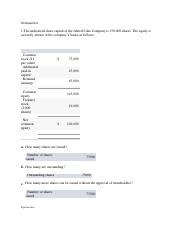Content

Now, the starting juncture of this procedure is to document the business transactions in the general journal. Posting in the ledger is a manual process; hence workforce is needed. It ensures that all assets and liabilities are to be recorded properly. The balances of nominal accounts are directly transferred to the profit and loss account. The balances related to balance sheet items are to be transferred to the general ledger account.
Also known as the general ledger, the ledger is a book in which all accounts relating to a business enterprise are kept. From these permanent records, periodical statements are prepared to show the trading profit or loss made by the business and its assets and liabilities, at any given date.
Sole Proprietorship 101: The Easy Guide to Setting One Up
For auditors, it provides an overview of the transactions during the auditing of an organisation. It reveals the state of the business by analysing its core information. Our mission is to empower readers with the most factual and reliable financial information possible to help them make informed decisions for their individual needs. Finance Strategists is a leading financial literacy non-profit organization priding itself on providing accurate and reliable financial information to millions of readers each year. Additionally, if an amount is paid to United Traders , an entry is made on the debit side of the United Traders Account.
EU publishes text for Basel III crypto rules for banks – Ledger Insights
EU publishes text for Basel III crypto rules for banks.
Posted: Mon, 13 Feb 2023 15:20:10 GMT [source]
If he introduces any additional https://personal-accounting.org/, an entry will be made on the credit side of his capital account. If he draws any money or goods from the business, this will reduce his capital, meaning that an entry should be made on the debit side of his capital account. For example, the amount of capital that Mr. John has on the first day of the accounting period will be shown on the credit side of Mr. John’s capital account. Any increase in an asset is recorded on the debit side of the relevant account, while any decrease in an asset is recorded on the credit side. Trace the ledger account in which the entries are to be posted. The debit side is used to record debit entries and the credit side is used to record credit entries. The title of the account is written in the center at the top of the page.
7 Setting Up AAIs for General Accounting
It creates a clear understanding of the account balances and reduces the efforts of finding from each ledger account. Put your assets and expenses on the left side of the ledger. Your liabilities, equity, and revenue go on the right side.
- This keeps the information organized not only by date, but also by account type.
- The bank statement style lends itself to modern accounting, but for the time being, double entry will be explained by the older traditional method.
- Examples of long-term liabilities are long term loans and mortgage, while the short-term liabilities are considered as account payables, interest payables and short-term loans.
- These accounts are not intended for observing general accounting transactions like current accounts, capital accounts, loan accounts, drawing accounts, etc.
AAISetup ConsiderationsGLG2The beginning account range for assets. Enter the object account only.GLG3The beginning account range for liabilities and equities. Enter the object account only.You can use this AAI item to reverse the sign on financial reports. Keep a running balance of the debits and credits so you can determine if the account will balance when you have entered all the transactions. As an example of a “special transaction,” on April 12, $7,500 was spent on new production equipment in your machine shop. At that time, the amount was incorrectly expensed to repairs and maintenance in the cash disbursements journal. It should have been recorded as a purchase of fixed assets.
Terms Similar to Ledger Account
A company may opt to store its general ledger using blockchain technology, which can prevent fraudulent accounting transactions and preserve the ledger’s data integrity. Accounting is the process of recording, summarizing, and reporting financial transactions to oversight agencies, regulators, and the IRS. Accruals are revenues earned or expenses incurred which impact a company’s net income, although cash has not yet exchanged hands.
What are the two types of ledger account?
General Ledger – General Ledger is divided into two types – Nominal Ledger and Private Ledger. Nominal ledger gives information on expenses, income, depreciation, insurance, etc. And Private ledger gives private information like salaries, wages, capitals, etc.
The phrase “keeping the books” infers to retaining a general ledger, the main accounting record for your company if you use double-entry bookkeeping. Transaction data is separated, by category, into accounts for liabilities, assets, owners’ equity, expenses, and revenues. A general ledger exemplifies the record-keeping strategy for a company’s monetary data, with credit and debit account records assessed by a trial equilibrium. It delivers a record of each economic transaction that takes place during the life of an operating firm and clenches account data that is required to prepare the company’s economic statements. Due to this, the amounts entered on the first day of the accounting period on the debit side of the accounts will be equal to the total of all the amounts entered on the credit side of various accounts .
Balancing your books:
Then when finished, What is a Ledger Account? The Rules Working with Ledger Accounts box to prevent future updates to the F0902 table. The Expense Management system uses billable business unit types to determine policy rules, expense account mapping, and tax mapping. You can combine object accounts into groups for financial reporting purposes. For each group, you set up an account category code in UDC table 09/01–43. These codes describe your organizational structure for higher level or selective reporting. After you post journal entries, the system creates and posts the reversing entries using the day specified in this constant. For example, on January 2, 2021, say you buy $4,000 worth of inventory with cash.
The ledger summarizes transactions by account, showing each account’s debits and credits. Ledger summaries usually show also how different account balances are running (e.g., balances for expense accounts and balances for sales revenue accounts). After you make closing entries, all revenue and expense accounts will have a zero balance. Since all revenue and expense accounts have been closed out to zero, this trial balance will only contain balance sheet accounts. Remember that the total debit balance must equal the total credit balance.

